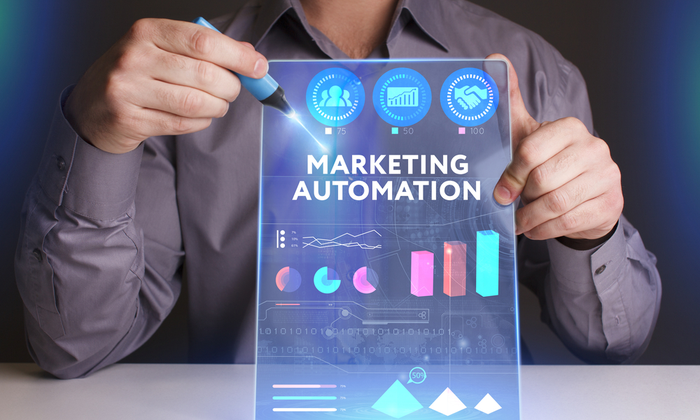Marketing is an essential aspect of any business, and with technological advancements, marketing has become even more important. The emergence of automated marketing has revolutionized the way businesses approach marketing.
Automated marketing is a process that uses technology to streamline and automate marketing tasks, making them more efficient, accurate, and effective. It has become increasingly popular due to its ability to increase customer engagement, save time and effort, and increase revenue.
Automated Marketing – What is it?

source: Google Images
Automated marketing, also known as marketing automation, is the use of technology to automate repetitive marketing tasks such as email marketing, social media management, lead generation, and customer segmentation.
This technology uses algorithms and software to analyze customer data and behavior, personalize communications, and create targeted campaigns. Automated marketing enables businesses to save time and resources while increasing customer engagement and revenue.
The Benefits of Automated Marketing
Automated marketing offers numerous benefits to businesses. Firstly, it allows businesses to save time and effort by automating repetitive marketing tasks. This means that marketers can focus on creating more engaging content and campaigns that drive better results.
Secondly, automated marketing improves customer engagement by personalizing communications and creating targeted campaigns. This leads to increased customer loyalty and retention. Finally, automated marketing helps businesses increase revenue by optimizing marketing campaigns based on customer data and behavior.
The Different Types of Automated Marketing
There are different types of automated marketing that businesses can use to improve their marketing efforts. These include email marketing automation, social media automation, lead generation automation, and customer segmentation automation.
Email Marketing Automation

source: Google Images
Email marketing automation is the process of automating email campaigns. This involves creating a series of automated emails that are sent to customers based on their behavior or actions. For example, an e-commerce store may send a welcome email to new subscribers, followed by a series of promotional emails based on their browsing and purchasing behavior.
Social Media Automation
Social media automation involves automating social media posts and interactions. This can include scheduling posts, responding to messages and comments, and analyzing social media data. Social media automation can help businesses save time and resources while improving their social media presence.
Lead Generation Automation
Lead generation automation involves using technology to generate and nurture leads. This can include creating landing pages, forms, and pop-ups that capture customer information, as well as automating lead nurturing campaigns based on customer behavior.
Customer Segmentation Automation
Customer segmentation automation involves dividing customers into different groups based on their behavior and preferences. This enables businesses to create targeted campaigns that are more likely to resonate with their audience. Customer segmentation can be done through various methods, such as email behavior, website behavior, and demographic data.
How to Implement Automated Marketing
Implementing automated marketing requires careful planning and execution. The following steps can help businesses implement an effective automated marketing strategy:
- Define Marketing Goals – Determine the business objectives that the automated marketing strategy will address.
- Choose the Right Automation Software – Select an automation software that fits the business’s needs and marketing goals.
- Set Up Tracking and Analytics – Set up tracking and analytics to measure the success of the automated marketing strategy.
- Develop a Content Strategy – Develop a content strategy that aligns with the business objectives and target audience.
- Create Automated Campaigns – Develop automated campaigns that are personalized, targeted, and based on customer behavior.
- Test and Optimize – Continuously test and optimize the automated campaigns to improve their effectiveness.

source: Google Images
Conclusion
Automated marketing is the future of marketing. It allows businesses to save time and resources while improving customer engagement and revenue. By automating repetitive marketing tasks, businesses can focus on creating more engaging content and campaigns that drive better results.
With the right automation software, businesses can implement an effective automated marketing strategy that aligns with their business objectives and target audience. As technology continues to evolve, so will automated marketing, and businesses that adopt this technology will have a competitive advantage.
However, it is important to note that while automated marketing can be highly effective, it should not replace human interaction entirely. Automated marketing should be used to supplement human efforts and enhance the customer experience, not replace it. Businesses should still strive to build personal relationships with their customers and provide excellent customer service.
In conclusion, automated marketing is a powerful tool that businesses can use to improve their marketing efforts. It offers numerous benefits, including increased efficiency, customer engagement, and revenue.
By implementing an effective automated marketing strategy, businesses can save time and resources while delivering more personalized and targeted campaigns. As technology continues to advance, the future of marketing is automated, and businesses that embrace this technology will have a competitive advantage in the marketplace.

